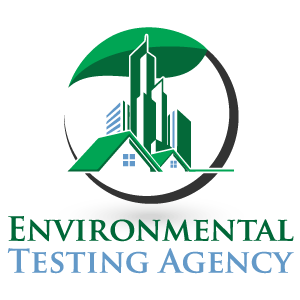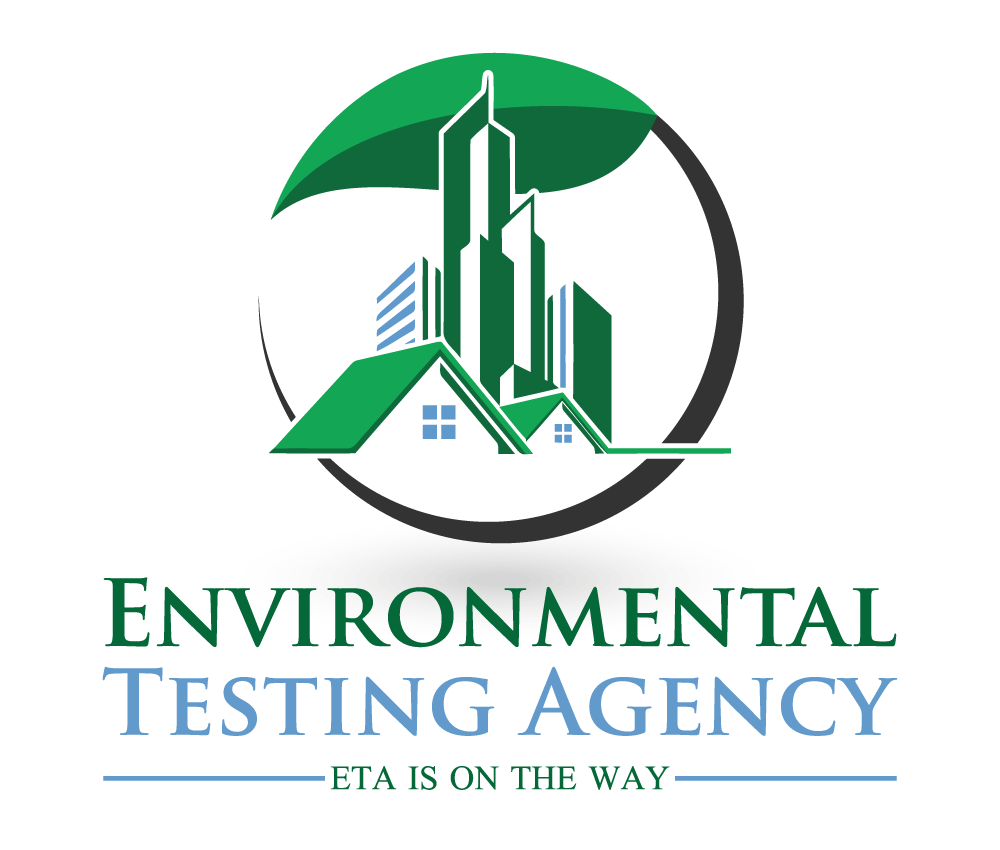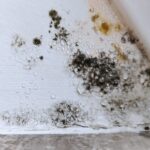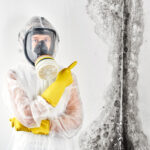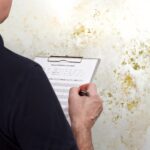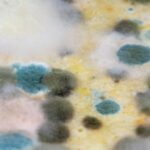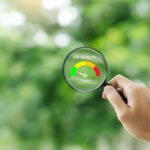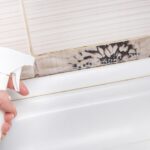What is Black Mold? Causes, Symptoms, Removal & More
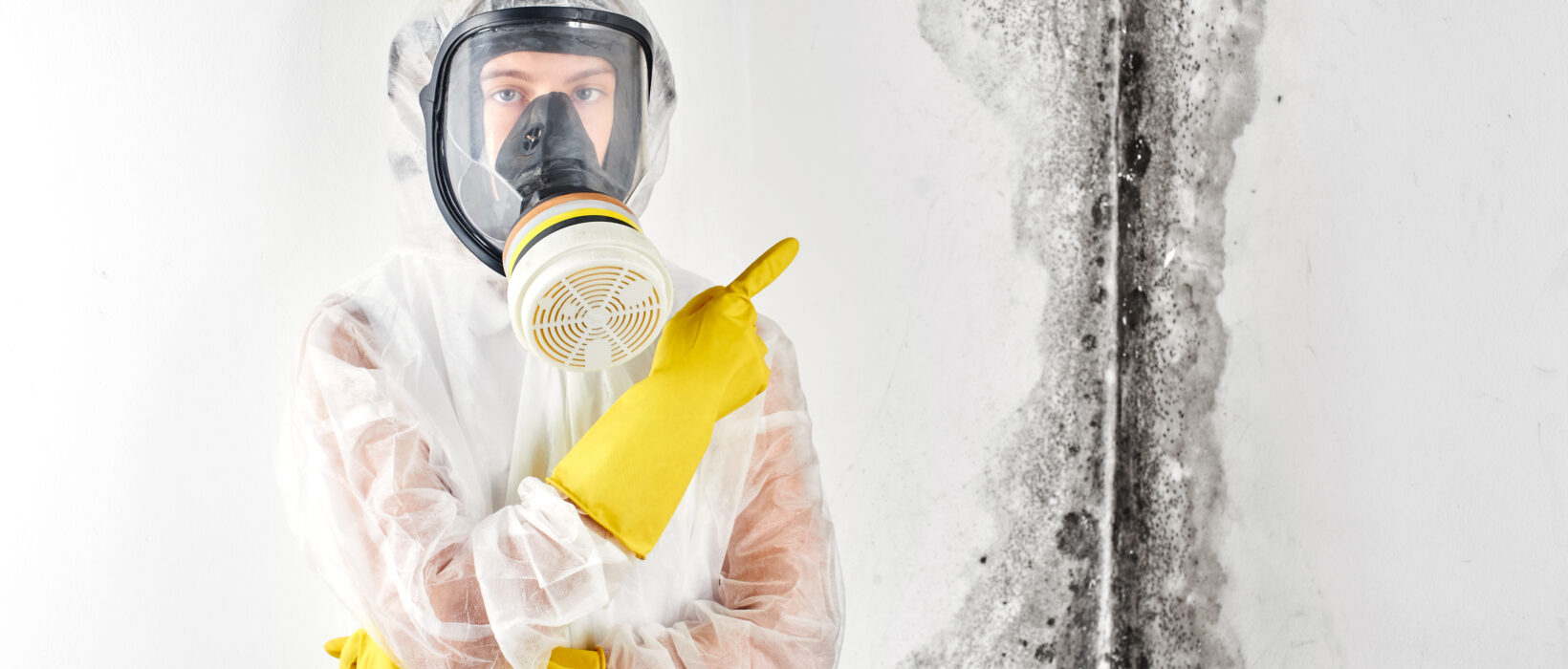
When homeowners discover mold in their homes, one of the first questions they usually ask is, “what is black mold?” This notorious type of mold often sparks fear due to its dark appearance and the potential health risks associated with it. However, to effectively manage and prevent black mold, it’s crucial to clearly understand what it is and why it’s different from other molds you might encounter. In this detailed guide, we’ll thoroughly address the question, what is black mold?, and cover every important aspect you need to know, including its scientific background, distinct characteristics, common causes, symptoms of exposure, effective removal methods, preventive measures, ideal growth conditions, and costs associated with professional mold inspection and removal.
What is Black Mold? (Scientific Name)
The scientific name for black mold is Stachybotrys chartarum. This type of mold is often referred to simply as “black mold” due to its characteristic dark green or black appearance. Stachybotrys chartarum belongs to a family of molds that thrive in damp, cellulose-rich environments. Unlike other common household molds, black mold grows more slowly but can have more serious health implications due to its ability to produce toxic compounds known as mycotoxins.
The appearance of black mold typically starts as small dark spots that gradually expand over time, usually in damp or humid areas such as bathrooms, basements, kitchens, attics, and around leaky pipes or roofs. Despite its name, black mold can sometimes appear in shades ranging from dark green to nearly black, and it often has a slimy or shiny texture.
One notable characteristic of Stachybotrys chartarum is that it releases spores into the air when disturbed. These spores, when inhaled or ingested, may cause a variety of health symptoms, making black mold a significant concern in indoor environments, especially for individuals with respiratory issues or compromised immune systems.

How Black Mold Is Different from Regular Mold
While all molds share some similarities, such as requiring moisture to grow, black mold is distinct in several key ways. Regular household mold, such as Penicillium, Cladosporium, or Aspergillus, is often less harmful, though still capable of causing mild allergic reactions in sensitive individuals. Here are a few key differences:
- Toxicity Level
The primary difference lies in the potential toxicity. Black mold (Stachybotrys chartarum) produces potent mycotoxins, which are harmful substances that can cause serious health issues upon prolonged exposure. Most common molds do not produce these toxic chemicals at significant levels.
- Growth Conditions
Black mold typically thrives on materials high in cellulose content, such as drywall, wallpaper, carpet, ceiling tiles, cardboard, and wood. While other molds can grow on similar materials, black mold prefers environments that are consistently damp and often requires higher moisture content to develop fully.
- Appearance and Texture
Black mold often has a distinctive slimy, wet texture and a dark color, making it easier to identify visually compared to more common molds that appear fuzzy or powdery and come in a variety of lighter colors, including green, white, and grey.
- Health Impact
Regular mold exposure might cause mild to moderate allergic reactions like sneezing, runny nose, or eye irritation. In contrast, black mold exposure can result in severe respiratory issues, neurological symptoms, chronic fatigue, and even more significant long-term health problems.
Understanding these distinctions helps homeowners identify black mold quickly and take the necessary steps to remove and prevent its recurrence.
Causes of Black Mold
Black mold does not appear randomly; certain conditions facilitate its growth. Identifying and addressing these conditions promptly is critical to preventing an infestation. Here are the primary causes of black mold:
1. Moisture and Humidity
Moisture is the most important factor contributing to mold growth. Mold spores require water to grow, and areas that remain damp or humid for extended periods become ideal breeding grounds. Common moisture-related issues include:
- Leaks
Plumbing leaks, roof leaks, or leaks around windows and doors create persistent moisture, allowing black mold to flourish.
- Flooding or Water Damage
Flooded basements or areas damaged by water often become prime mold sites if they are not thoroughly dried and cleaned immediately.
- High Humidity Levels
Humidity levels above 60% encourage mold growth. Poor ventilation, especially in bathrooms, kitchens, and laundry areas, increases humidity levels significantly.
2. Poor Ventilation
Inadequate ventilation traps moisture indoors. When moisture-laden air cannot circulate and dry out effectively, condensation occurs, creating damp surfaces conducive to mold growth.
3. Organic Materials
Mold needs organic material to feed on. Black mold thrives on cellulose-rich materials such as wood, paper, drywall, cardboard, carpet backing, wallpaper glue, and insulation.
4. Lack of Sunlight and Airflow
Dark, stagnant areas in homes, such as basements, attics, and closets, provide perfect conditions for mold growth. Natural sunlight and proper airflow help inhibit mold development by reducing humidity and moisture buildup.
5. Improper Cleaning or Maintenance
Neglecting routine cleaning and maintenance allows moisture and organic debris to accumulate, creating ideal conditions for mold development. Regular inspection and maintenance reduce the likelihood of mold taking hold.
Symptoms of Black Mold Exposure
Exposure to black mold affects individuals differently, depending on their sensitivity, duration of exposure, and overall health. Common symptoms can range from mild to severe:
Mild Symptoms
- Sneezing
- Runny or blocked nose
- Itchy or watery eyes
- Skin irritation or rashes
- Mild coughing or throat irritation
Moderate Symptoms
- Persistent coughing
- Wheezing and difficulty breathing, especially in asthmatics
- Frequent headaches
- Sinus infections
- Fatigue and lethargy
Severe Symptoms (Long-term Exposure)
- Chronic respiratory problems
- Severe allergic reactions
- Asthma attacks
- Neurological symptoms such as confusion, memory loss, dizziness, or anxiety
- Persistent fatigue and weakened immune function
People with existing respiratory issues, allergies, compromised immune systems, children, and the elderly are more susceptible to severe reactions from black mold exposure.
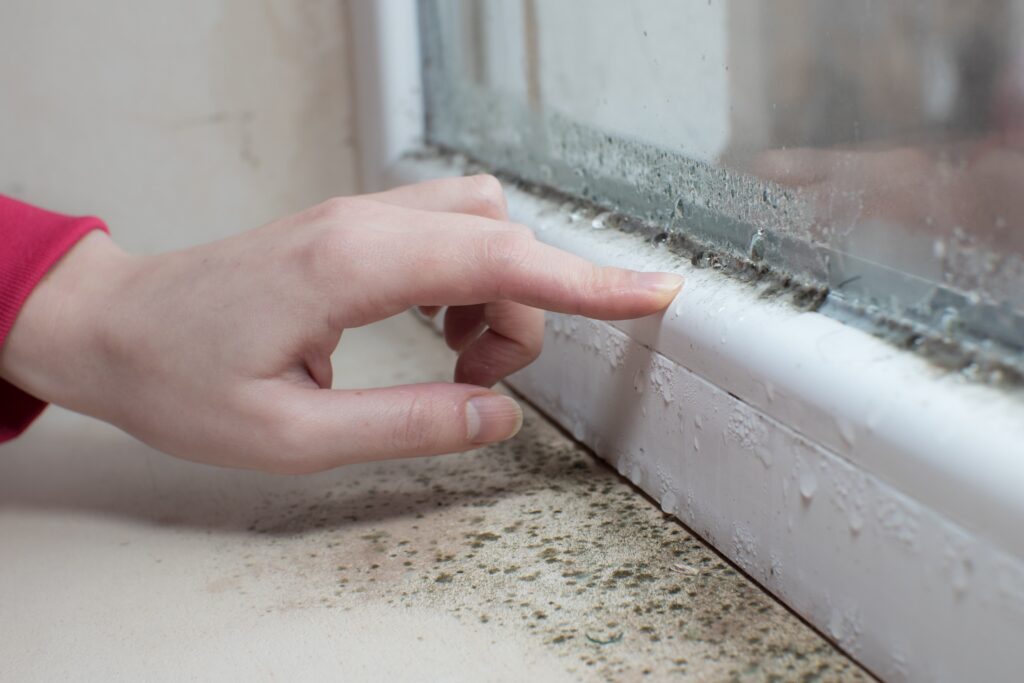
Removal of Black Mold
When you discover black mold, it’s critical to act quickly. While smaller infestations can sometimes be handled personally, larger or more severe mold problems typically require professional intervention.
Steps for DIY Mold Removal (Small Areas)
- Wear Protective Equipment
Use gloves, masks (N95 respirator recommended), goggles, and protective clothing.
- Isolate the Area
Seal off the area from the rest of the home to prevent spores from spreading.
- Remove Moldy Materials
Porous materials like drywall and carpets typically need to be discarded, while non-porous surfaces (tiles, countertops, glass) can often be cleaned.
- Clean Thoroughly
Use a mold-killing solution such as diluted bleach, hydrogen peroxide, or commercially available mold removers. Scrub surfaces until the mold is completely gone.
- Dry the Area Completely
Use fans, heaters, or dehumidifiers to dry the cleaned area thoroughly, as moisture can quickly lead to re-growth.
Professional Mold Removal
For infestations larger than approximately 10 square feet or areas involving heating and air conditioning systems, hiring certified mold remediation professionals is strongly recommended. Professionals use advanced techniques, equipment, and safety measures to completely eradicate mold and minimize health risks.
Prevention of Black Mold
Preventing black mold involves controlling moisture and humidity in your home. Here’s how:
- Monitor Humidity Levels
Maintain indoor humidity below 50-55%. Use a dehumidifier, especially in damp areas.
- Improve Ventilation
Regularly ventilate bathrooms, kitchens, laundry rooms, and basements. Install exhaust fans where necessary.
- Promptly Repair Leaks
Immediately fix leaking pipes, roofs, and windows to prevent moisture buildup.
- Regular Cleaning
Clean and disinfect mold-prone areas like showers and kitchens regularly.
- Use Mold-resistant Materials
When renovating or constructing, opt for mold-resistant drywall, paints, and insulation.
Humidity and Temperature Ideal For Black Mold Growth
Black mold typically thrives in warm, damp environments. Ideal conditions include:
- Humidity: Between 70%-90%
- Temperature: Between 70°F and 90°F (21°C to 32°C)
Maintaining humidity below 60% and indoor temperatures below 75°F can significantly reduce mold growth.
Average Cost of Inspection, Testing & Removal of Black Mold
Understanding the potential costs associated with black mold is essential for budgeting and making informed decisions. The price of dealing with black mold can vary depending on the extent of the infestation, the location of the mold, and whether professional services are required.
Mold Inspection Costs
A professional mold inspection is usually the first step if you suspect mold but haven’t confirmed it visually. During this process, experts will look for signs of mold, moisture issues, and areas at high risk for infestation.
- Average Cost: $300 – $600
Some inspectors may charge per square foot, especially for larger properties. More advanced inspection with thermal imaging or air quality testing may push costs up to $700 or more.
Mold Testing Costs
Testing confirms the presence and type of mold (including black mold), and measures spore levels in the air.
- Surface Testing: $30 – $150 per sample
- Air Testing: $200 – $400 on average
- Full Professional Testing (with lab reports): $500 – $1000+
Testing is important when health symptoms are present or before buying/selling a property.
Black Mold Removal Costs
Professional mold remediation companies use specialized equipment and safety protocols to remove black mold safely and thoroughly. The cost of removal varies significantly based on the size of the infestation:
- Small Areas (10 sq. ft. or less): $500 – $1,500
- Medium Areas (10 – 100 sq. ft.): $2,000 – $5,000
- Large or Whole-House Removal: $6,000 – $30,000+
Key Factors That Affect Cost
- Severity and size of the infestation
- Accessibility (inside HVAC systems, wall cavities, crawlspaces)
- Damage repair (e.g., drywall replacement, carpet removal)
- Post-remediation testing and verification
While DIY might seem cheaper, incorrect removal can cause the mold to return or spread spores throughout your home, making professional remediation worth the investment in many cases.
Images of Black Mold
Note: If you’re viewing this guide online, visual identification is crucial. Here are some common appearances of black mold in household settings:
- Black Spots in Corners: You’ll often notice clustered black or dark green spots in moist corners of bathrooms, basements, or under sinks.
- Slimy Texture: Black mold tends to be slimy or glossy in appearance, unlike some fuzzy or dry mold types.
- Dark Patches on Walls or Ceilings: Especially near water damage or leaks.
- Black Rings on Wallpaper or Drywall: Can look like soot or even mildew at first glance.

When in doubt, don’t touch suspected black mold with bare hands. Always consult professionals if the area is larger than a square foot or if anyone in the home has preexisting respiratory conditions.
What Is Black Mold FAQs
1. Can black mold kill you?
While black mold itself is unlikely to be fatal, prolonged exposure, especially in individuals with weakened immune systems, asthma, or chronic illnesses, can lead to severe health complications that may become life-threatening if left untreated.
2. Is black mold only found in old or dirty homes?
No. Black mold can grow in any home, regardless of cleanliness or age, as long as the conditions (moisture, warmth, and poor ventilation) are right. Even new homes with hidden leaks can harbor black mold.
3. Can I paint over black mold to hide it?
No. Painting over black mold is not a solution. It does not stop mold growth and can cause it to worsen behind the paint, leading to larger infestations and damage.
4. Can black mold grow in air conditioners or HVAC systems?
Yes. HVAC systems are common places for mold growth, especially if the unit is not regularly maintained or if moisture builds up in ducts and filters. Mold spores can circulate throughout your home if not addressed.
5. Can pets be affected by black mold exposure?
Yes. Dogs, cats, and other pets can suffer from respiratory symptoms, sneezing, skin irritation, or lethargy due to mold exposure, similar to humans.
6. Is there a natural way to remove black mold?
Some natural products like vinegar, baking soda, and tea tree oil can help in small cases. However, for black mold, especially Stachybotrys chartarum, professional removal is recommended due to the toxic nature and risk of spreading spores.
7. Does renters insurance or home insurance cover black mold damage?
It depends on the policy. Most insurance companies only cover mold damage caused by a “covered peril” (like a burst pipe) and not due to long-term neglect or maintenance issues. Always check your policy details.
8. How long does it take for black mold to grow after water damage?
Black mold can begin to grow within 24 to 48 hours of moisture exposure. However, it may take 1 to 2 weeks to become visible depending on the conditions and materials.
9. Is black mold contagious between homes or people?
Black mold is not contagious like a virus, but mold spores can travel through air, clothing, pets, and furniture. It’s possible to unintentionally carry spores to other areas or homes.
10. Can I live in a house during black mold removal?
In some cases, yes, if the mold is confined to a small area and sealed off properly. However, for large infestations, especially involving HVAC systems, it’s safer to vacate the home during professional remediation.
Conclusion
Black mold is more than just a cosmetic issue, it can have serious effects on your home’s structure and your health. By now, you should have a clear answer to what is black mold, how it differs from other molds, and the steps needed to detect, remove, and prevent it.
Here’s a quick recap:
- What is black mold? It’s a toxic mold, scientifically known as Stachybotrys chartarum, known for its dark appearance and potential to cause serious health issues.
- It thrives in moist, cellulose-rich environments with poor ventilation.
- Common symptoms of exposure include respiratory problems, fatigue, headaches, and allergic reactions.
- Prevention is the best strategy, keep your home dry, well-ventilated, and watch for early signs of moisture or leaks.
- Professional inspection and removal can be costly but are often necessary to ensure your home is safe.
If you suspect black mold in your home, don’t wait. Early action can save you money, preserve your health, and protect your property.

